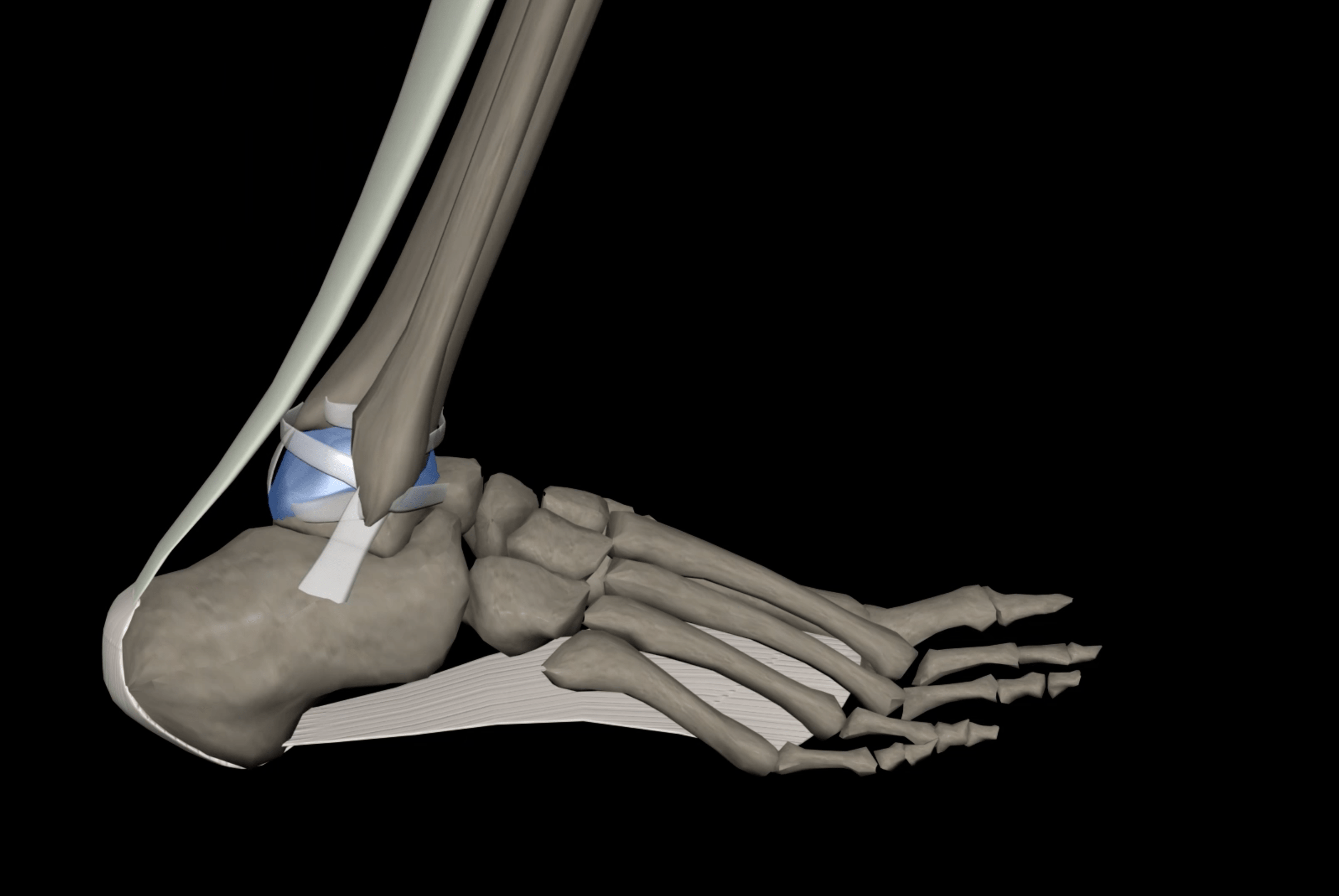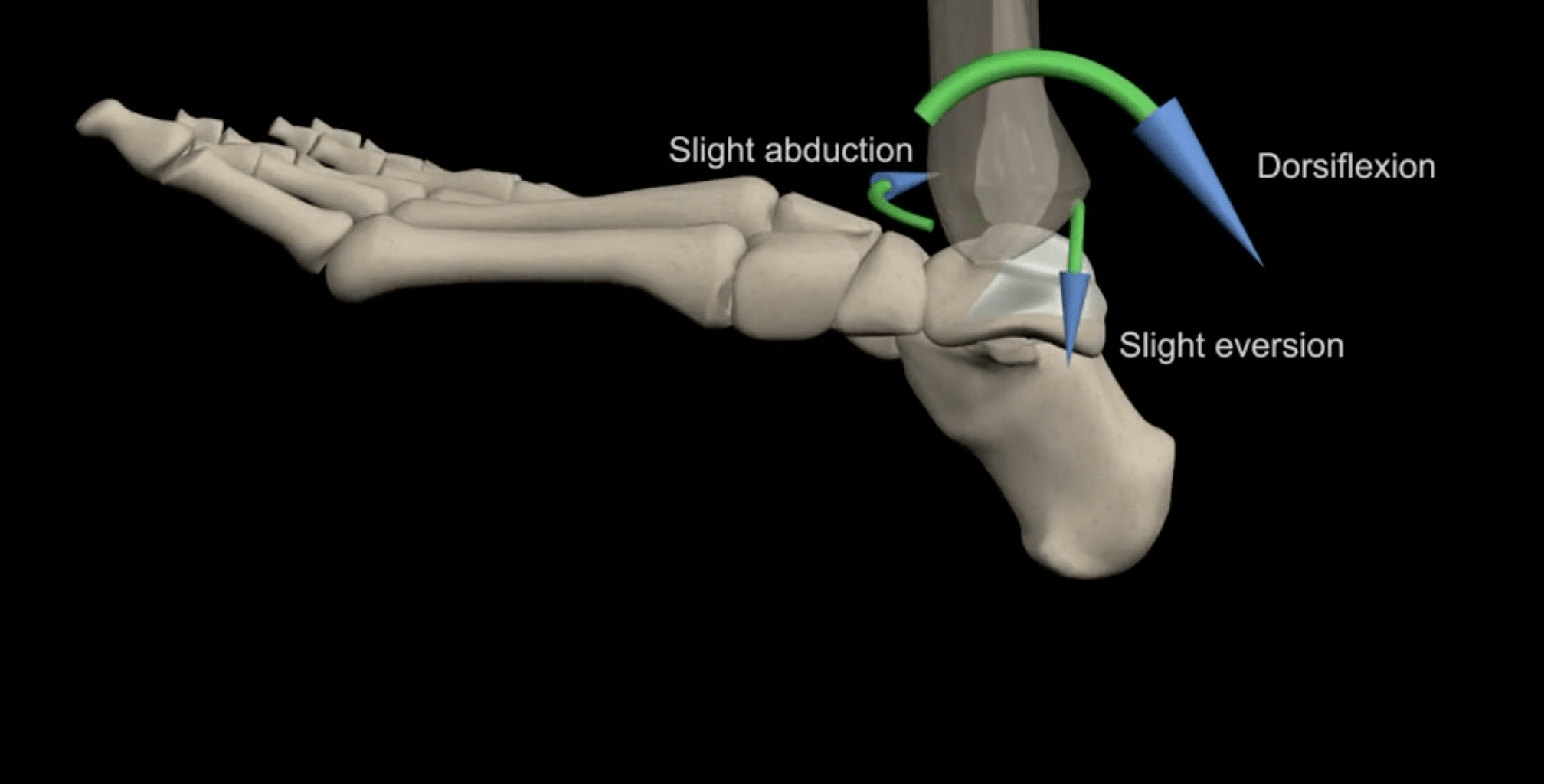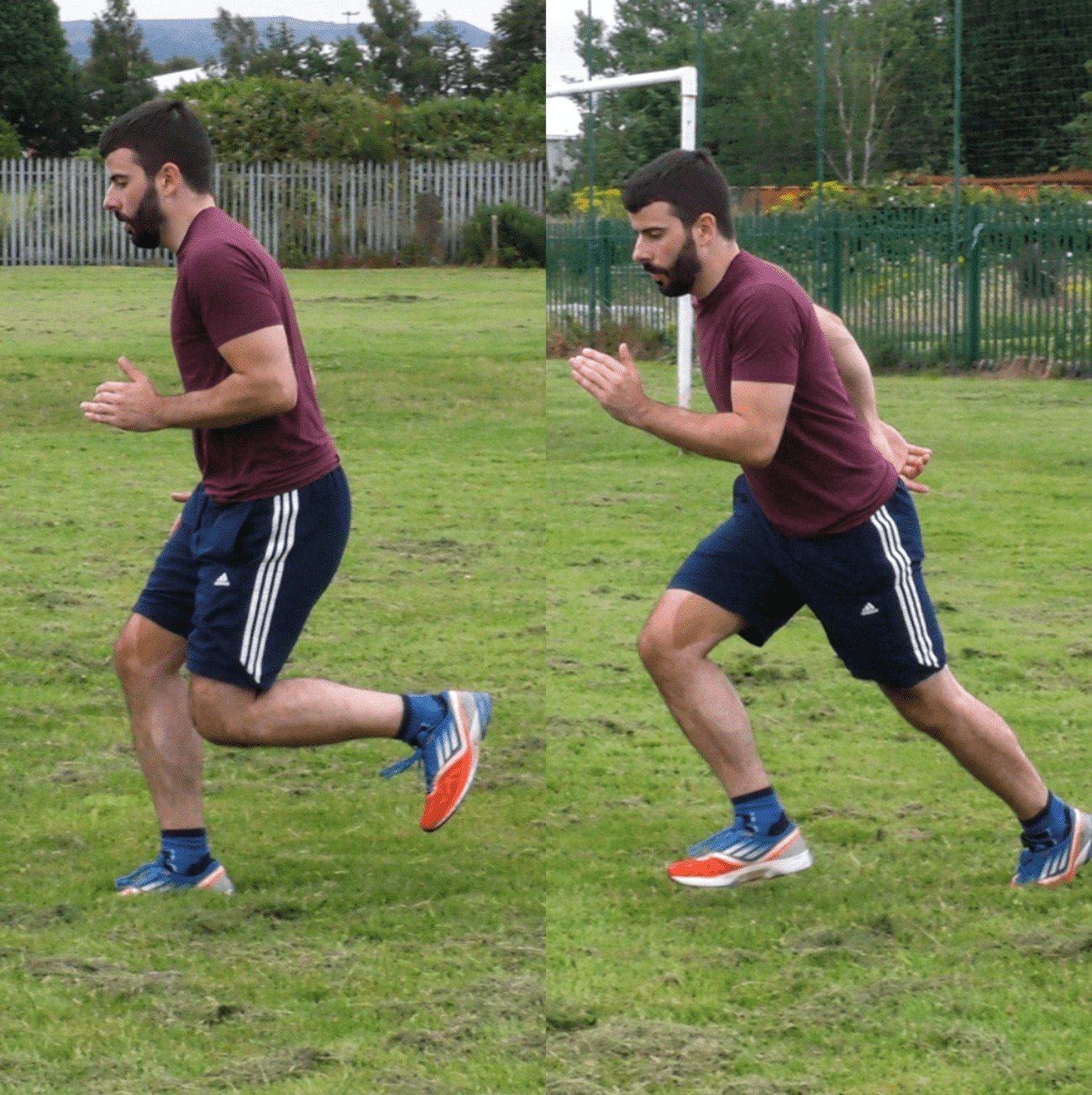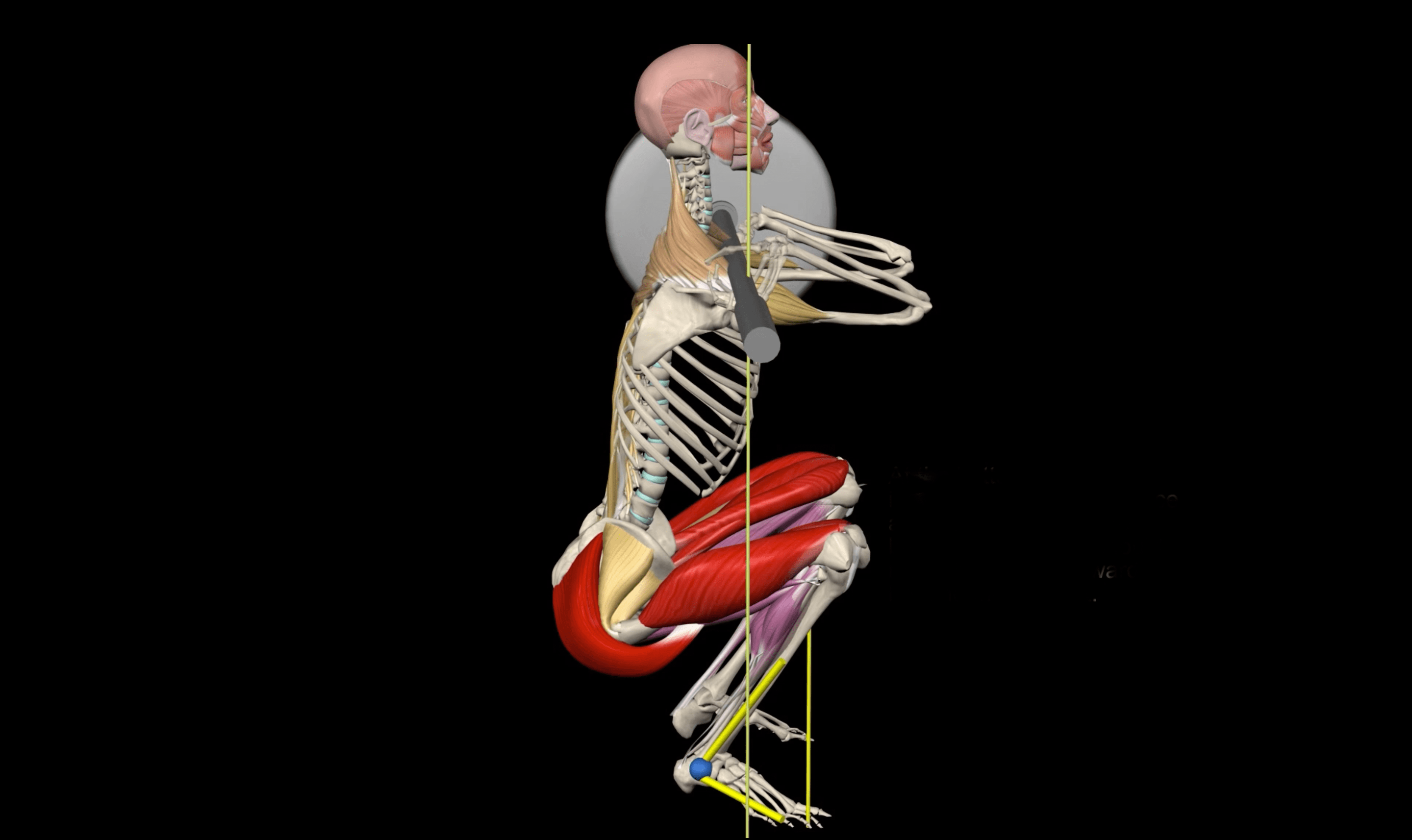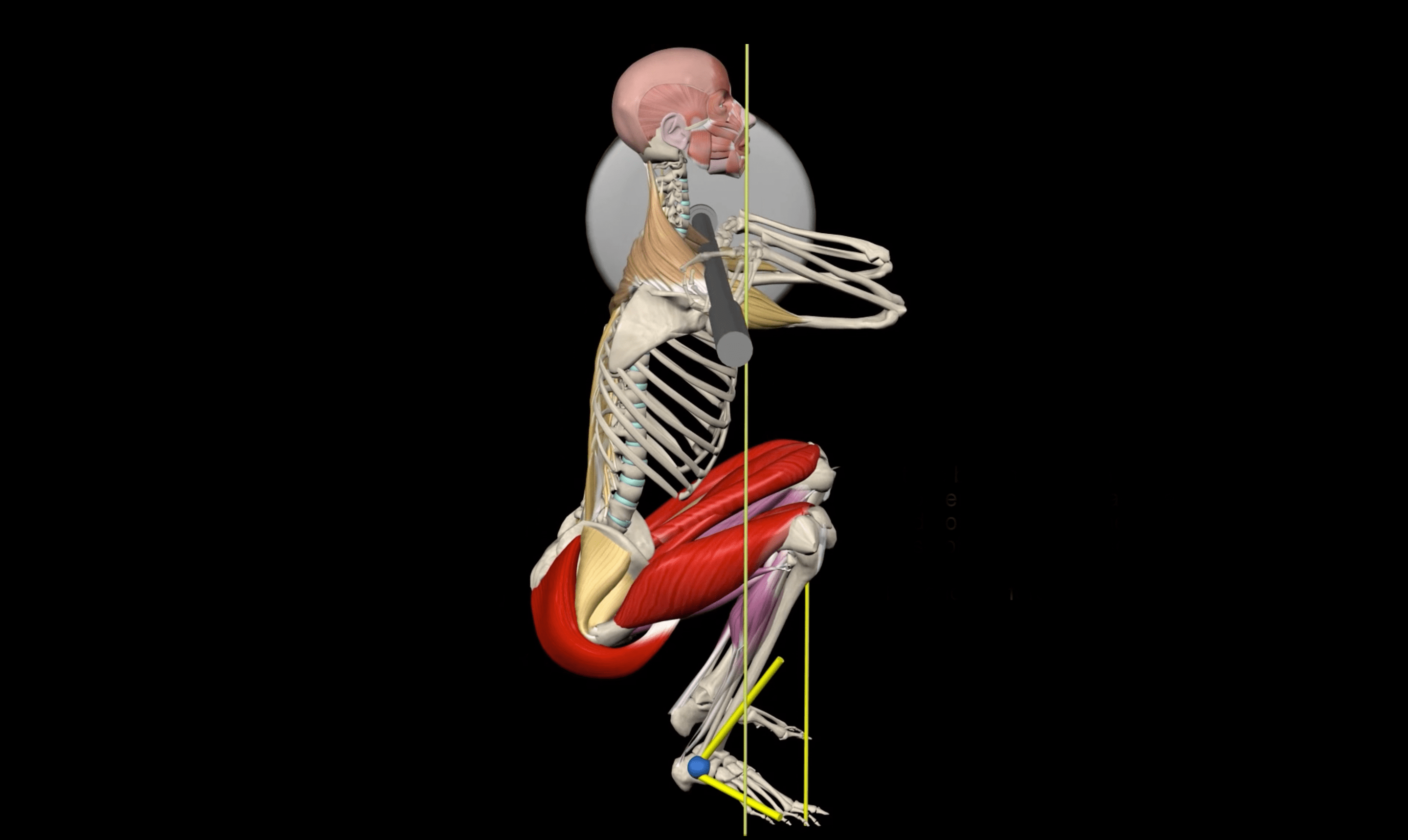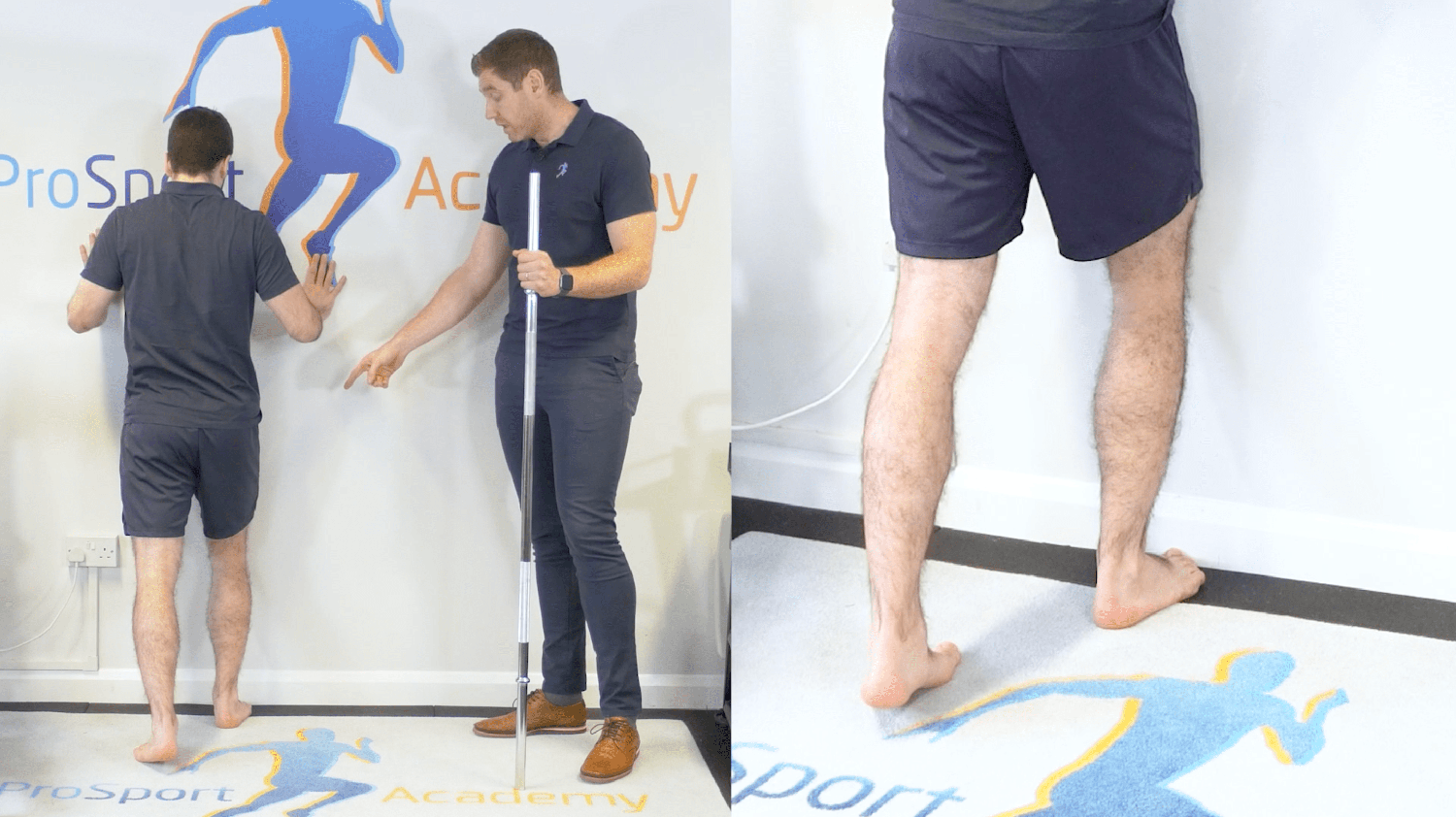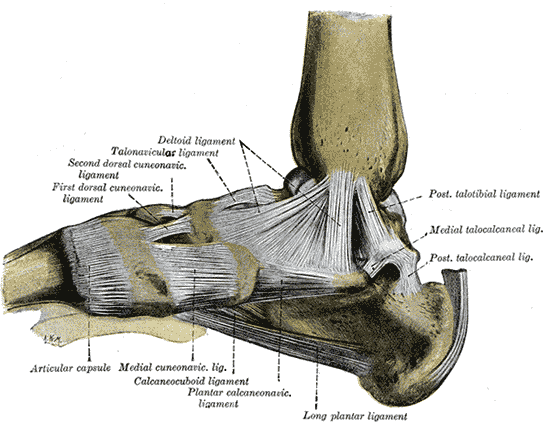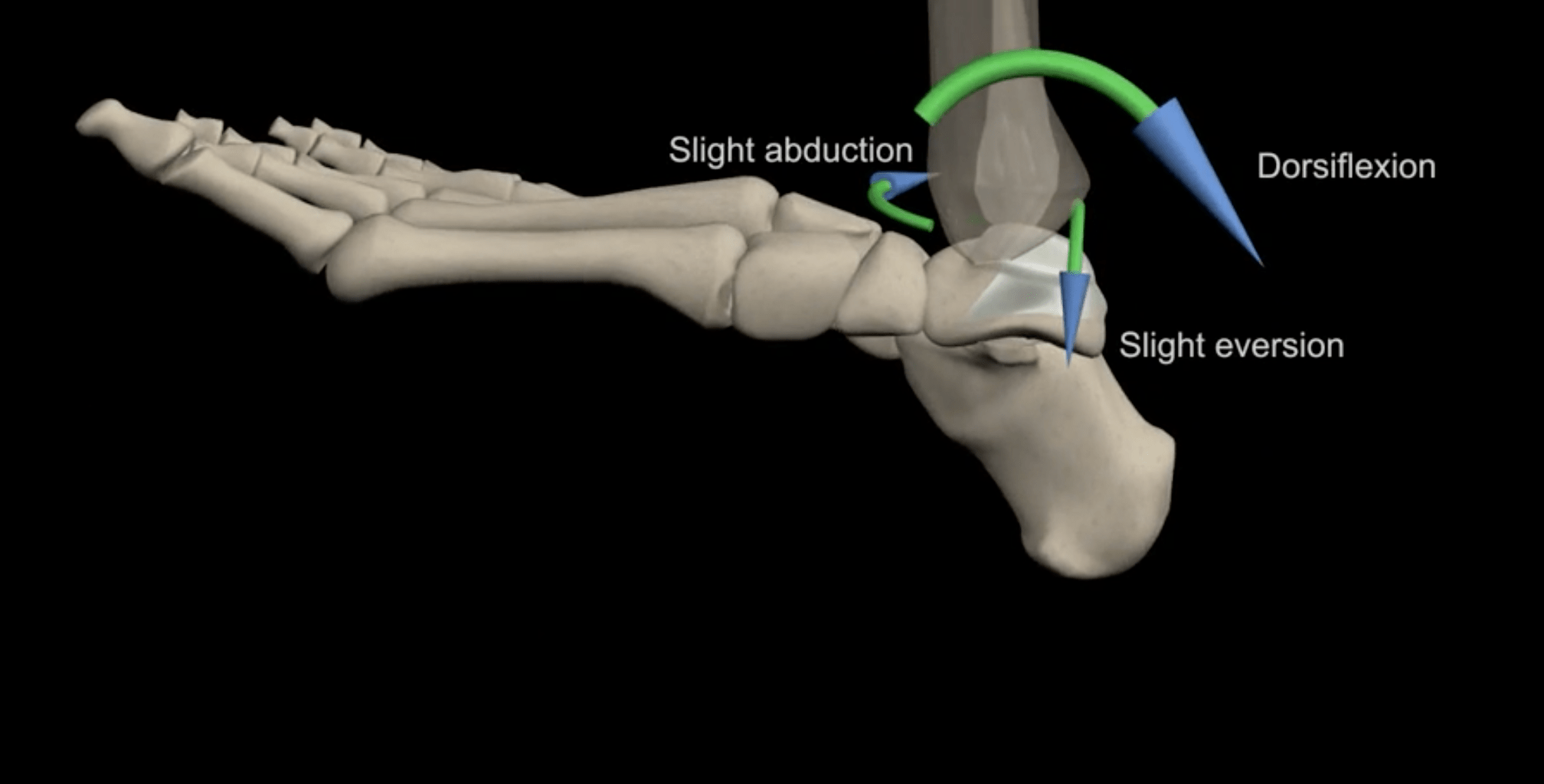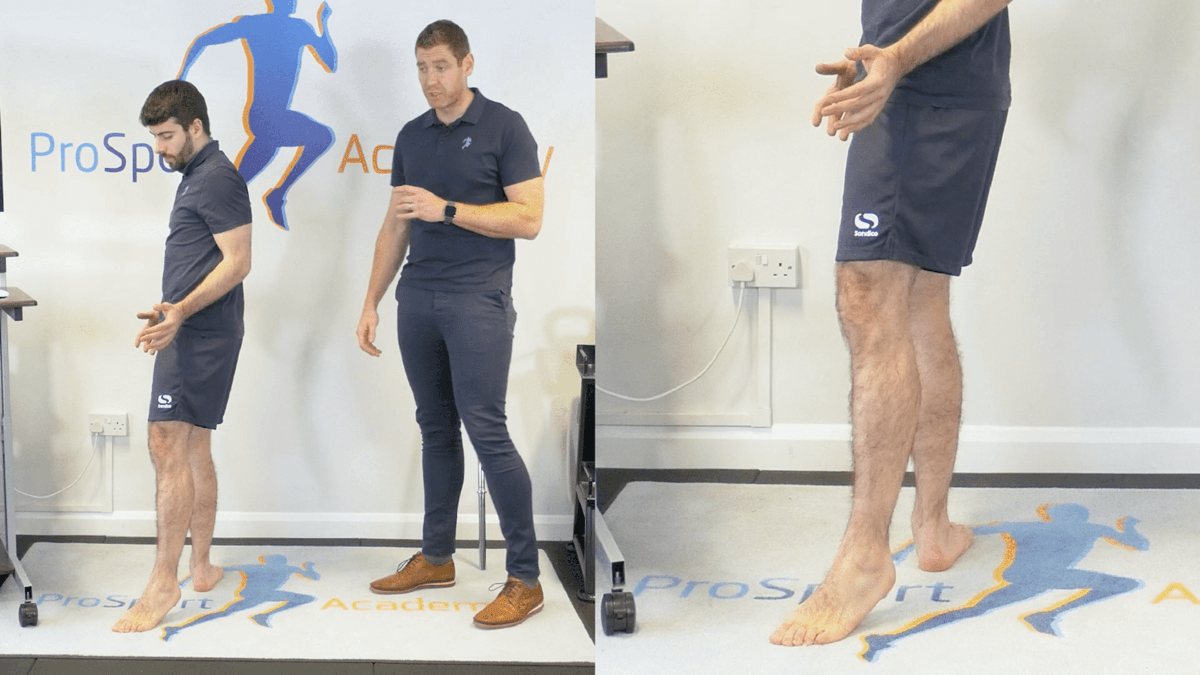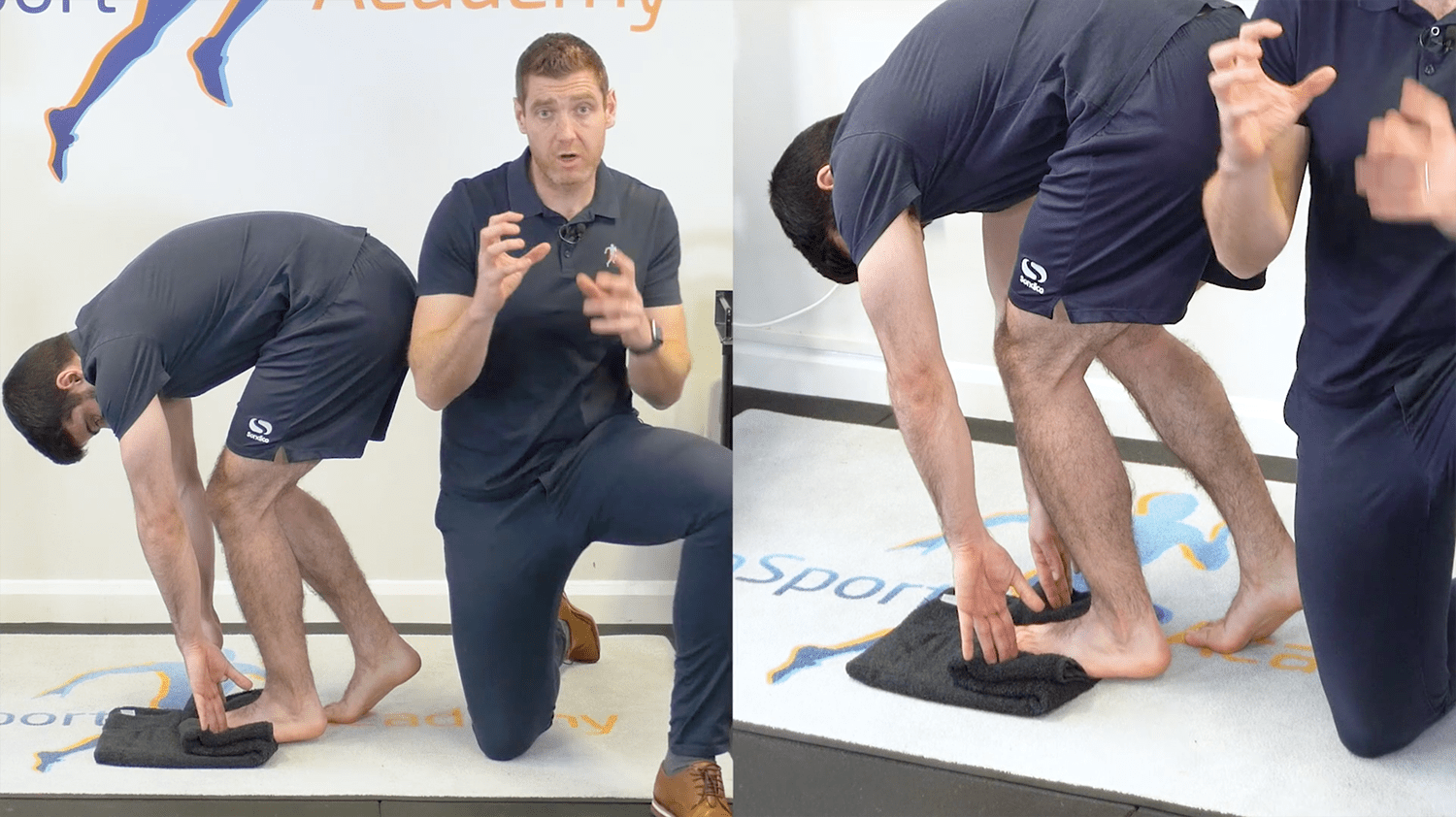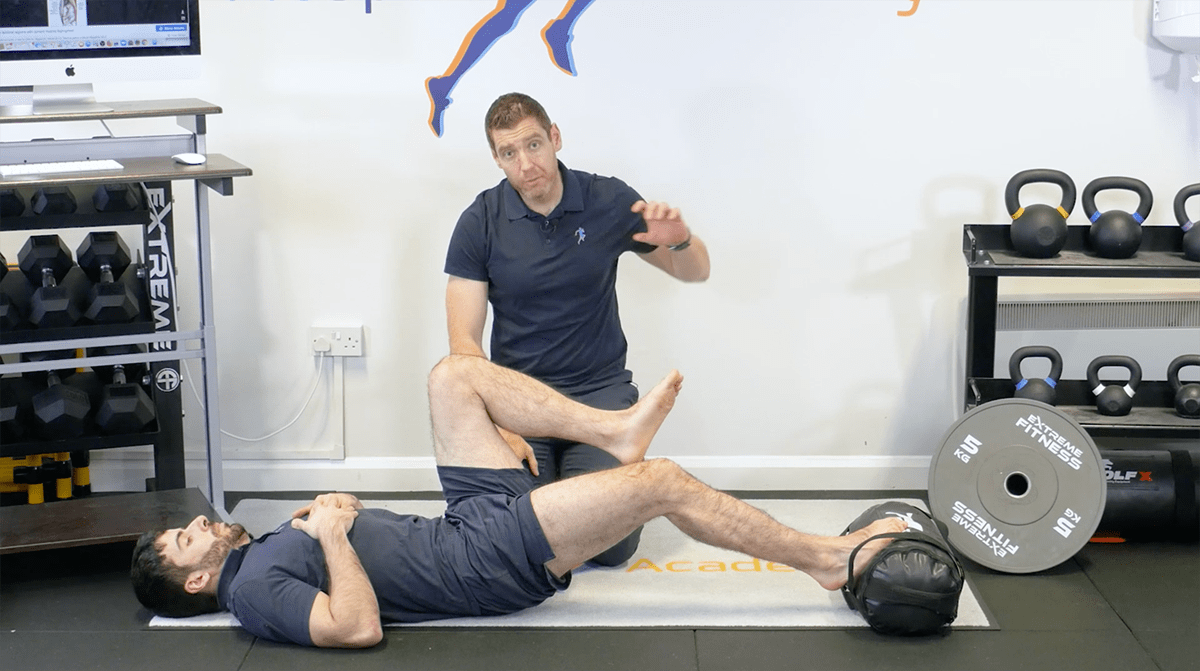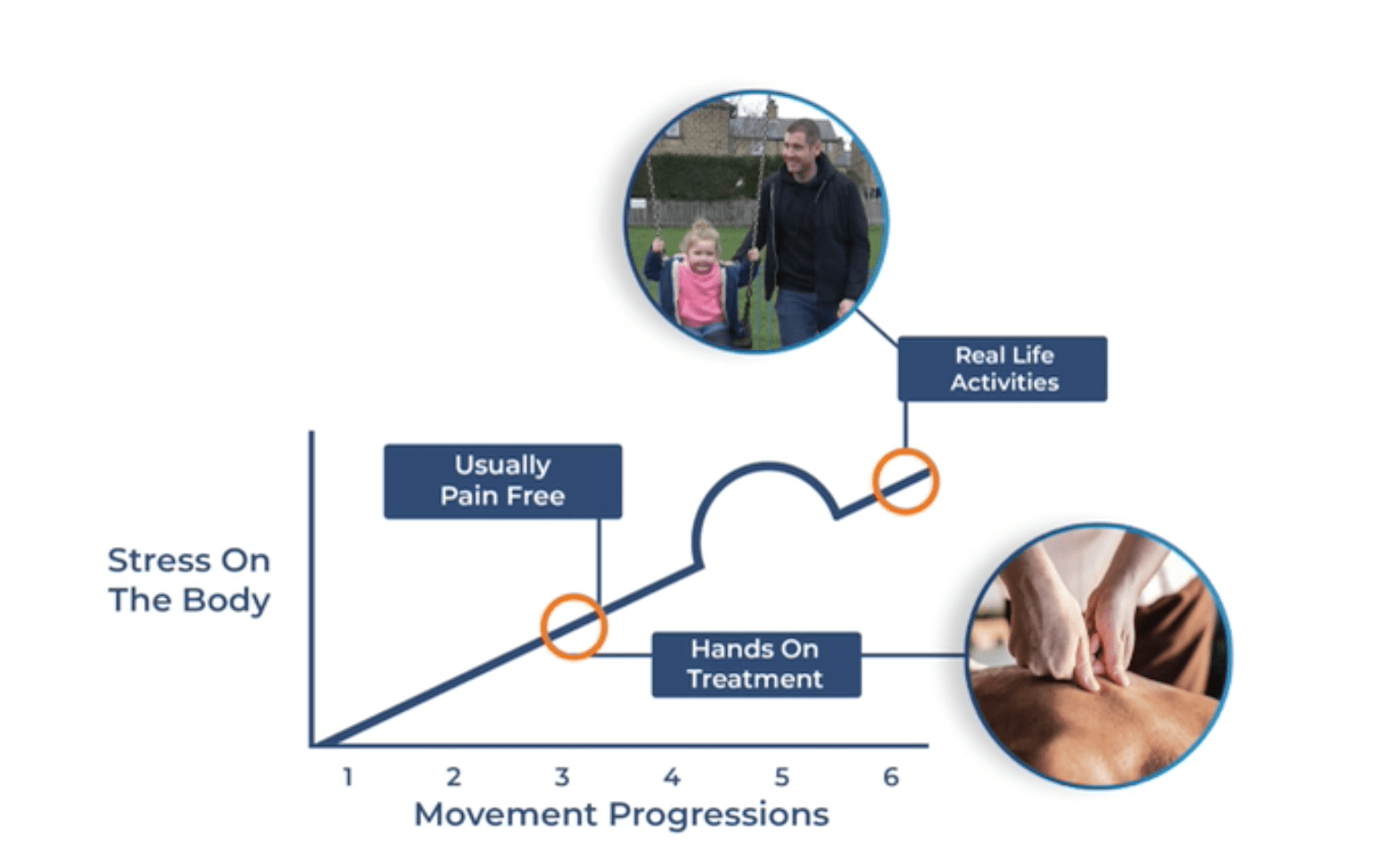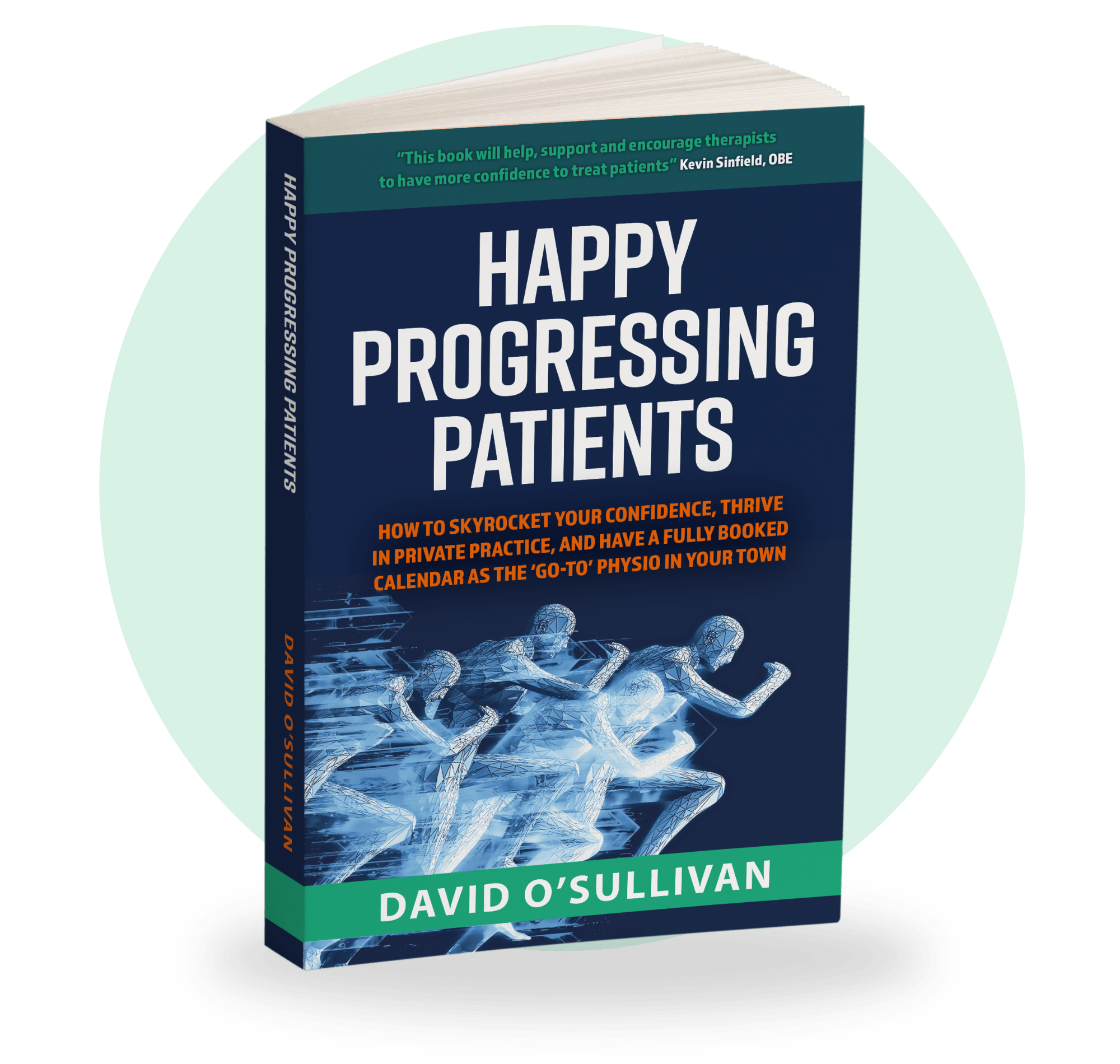
We all take ankle dorsiflexion for granted, right? Well, your patient probably doesn’t. After all, the effects of restricted dorsiflexion have driven them to ask you for help. But can you help them?
In my experience, so many therapists make small gains. They don’t have the confidence or clarity to make their results stick. If that sounds like you, don’t worry. Today we can put an end to that feeling.
I spent years treating private practice patients and high-performance athletes with complex ankle injuries. It never was easygoing. But all it took was a little understanding and a structured system. Only then could I clinically reason, find the true cause, and bridge the gap with every single patient.
Without this process, your patient or athlete will only ever fail in the real world. You lose the reputation you have worked so hard for, you lose referrals and ultimately revenue.
In this article, I’ll share the exact process I use to achieve real results with every ankle dorsiflexion and ankle mobility patient.
This content will cover;
- What ankle dorsiflexion is.
- Why we need dorsiflexion.
- Key anatomy involved in dorsiflexion.
- The research and why ankle dorsiflexion is so important.
- How to test ankle dorsiflexion.
- Improve your ankle mobility with a few powerful exercises.
Read on to find out exactly how to assess and improve ankle dorsiflexion once and for all….
What Is Ankle Dorsiflexion?
Before we begin discussing testing and how to improve dorsiflexion we should first cover what dorsiflexion actually means to your patient’s ankle mobility.
Dorsiflexion occurs at the talocrural joint when the foot and toes are bought toward the shin. It sounds simple but it is so easy to underestimate the motions that the foot and ankle go through.
With all the connective tissue, ligaments, muscle, and bone, it can be overwhelming knowing where to start when looking to improve dorsiflexion.
To really understand dorsiflexion and ankle flexibility you must ask what dorsiflexion of the ankles does for us.
What Does Ankle Dorsiflexion Do For Us?
Foot and ankle joint mobility is vital to your patient’s everyday movements. As Sidaway et al note in their 2012 paper, for your non-sporting patient dorsiflexion facilitates everyday tasks such as walking, getting up from a chair or climbing the stairs. These movements include anything where the knees need to go over the toes.
For athletes, ankle mobility plays a crucial role in their performance. Dorsiflexion allows for deceleration, sidestepping, cutting, jumping, and landing.
But dorsiflexion of the ankles isn’t black and white. You don’t want too much and you don’t want too little. You need just the right amount to go through a normal range of motion, with the appropriate amount of tension through the muscles for the body to do its job.
It’s that simple. But what needs to do its job to facilitate this process?
Essential Anatomy For Improving Ankle Dorsiflexion
The ankle is a complex structure and so there are so many elements that play a role in ankle flexibility and dorsiflexion.
Below are some key tissues involved in dorsiflexion and ankle mobility. Take note of these! Later you’ll use this information to differentiate between tests, clinically reason, and establish where to start with your hands-on treatment and exercises.
- Ankle Joint Ligaments – Posterior Tibiotalar And Talofibular Ligaments
- Calf muscles – Soleus And Gastrocnemius
- Achilles Tendon
- Plantar fascia & Quadratus Plantae
- Shin Muscles – Tibialis Anterior
- Big Toe Muscles – Flexor Hallucis Longus
- Peroneus Tertius And Brevis
- Flexor Digitorum Longus
Why are we interested in these? Well…..
Through dorsiflexion, you need the soleus to lengthen but may not need as much lengthening through gastrocnemius because of its attachment to the knee and because it is shortened when we bend the knee over the tibia and fibula.
The tibialis posterior, flexor digitorum longus, peroneus longus and flexor hallucis longus all sit deeper and have to lengthen on dorsiflexion.
There are also muscles that will need to shorten for example the tibialis anterior and the peroneus tertius. These are going to be very important when it comes to your subjective assessment and understanding previous ankle injuries and sprains.
Finally, do not underestimate the roles of the talus, tibia, fibula, and calcaneus when the ankle goes into dorsiflexion.
Why Is Ankle Dorsiflexion So Important?
Efficient ankle mobility and range of motion facilitates real-world movements your patient has to perform every minute of the day. But improving ankle dorsiflexion has far bigger health implications.
Poor Dorsiflexion Risks Further Injuries
The literature and health information tells us that poor ankle mobility has been shown to increase the risk of injury in both athletes and non-sporting patients. As Rabin et al noted in their 2014 study poor ankle dorsiflexion and a reduced range of motion increases the risk of Achilles tendinopathy, ACL and patella tendon injuries.
Research by Mason-Mackay et al found poor ankle dorsiflexion can negatively affect landing mechanics and therefore increase the risk of injury.
With poor ankle flexibility and reduced dorsiflexion, the body begins to compensate. The research tells us that when these movement adaptations take hold after a previous ankle injury, athletes have an increased risk of hamstring injuries.
In short, improving your patient’s ability to go into dorsiflexion isn’t just about getting results. You’re helping them reduce their risk of injury.
Dorsiflexion Mobility And Squat Depth
Poor ankle mobility won’t just put your patient at risk of injury. Take a moment and think of your patient performing a squat.
If limited ankle mobility reduces the ability of the tibia and fibula to come over the talus this will affect our centre of mass and squat movements and as Kim et al found in their 2015 research paper squat depth is directly related to ankle dorsiflexion mobility.
See the image above. When we squat we naturally need the knees forward. The nervous system needs to feel safe and so in this position we have balance, good access to midfoot and the soleus has an ability to build tension.
If you want to come back up you are in a much better position to produce horizontal ground reaction forces.
Now you can see from the image above that if we don’t have efficient dorsiflexion and weight shifts back, our centre of gravity is behind our base of support and imbalanced.
To come back up there is no option but to push through the heel, the knees snap back because there is no intention through the soleus which won’t delay knee extension, and the lower back is used to compensate often causing more issues.
If you lose ankle dorsiflexion mobility then the nervous system and the body will adapt and find new ways of movement. These movement patterns can be risky.
As I always cover in the Mentorship, the key here is to improve your ankle mobility and get everything working as it should. Read on to find out just how I do that with every patient.
The One Important Question For Ankle Dorsiflexion
We understand what dorsiflexion is, what it does and why it is so important but there is one thing you must do with your complex ankle pain patient. You must pinpoint what is restricting dorsiflexion.
Is it an ankle problem? Or is there an inability for the contributing tissues to lengthen, presumably laid down by the nervous system which is preventing your patient from accessing a full ankle range of motion?
In cases when your patient has prolonged ankle immobilisation or injuries to the Achilles tendon where the nervous system chooses not to use the ankle through a full range of motion, is this just an adaptation that you could undo easily or is there a genuine pathology present?
Now we understand what we are looking for let’s look at my favourite ankle mobility test.
My Favourite Ankle Mobility Range Of Motion Test
When it comes to testing ankle range of motion we have closed and open-chain options. There are benefits of both but 9 out of 10 times I’ll use closed chain.
In closed chain, such as a knee to wall lunge test, you achieve greater dorsiflexion but you also have a few more options to dig deeper into what could be causing limited ankle flexibility.
There are hundreds of ankle mobility tests. Just take a quick search on YouTube or social media websites. Most of them are based on a solid theory but are these really doing what you need them to?
If you asked me, there is one test I come back to with every athlete or non-sporting patient.
The Knee To Wall Lunge Test
The knee-to-wall lunge test is by far my favourite ankle mobility test and it is possibly the most effective.
Your patient must plant one foot in front of the wall, the other behind and bring their knee to the wall. Now measure how far away from the wall the planted foot can get without the back heel leaving the ground.
When testing, use a tape measure to accurately measure the distance between your patient’s foot and the wall. If you happen to be doing this test in different settings with athletes or a team away from home be sure to account for the skirting boards.
The power of this test comes when putting the non-weight-bearing foot in differing positions. The variations, with the back foot heel down, heel up or completely off the floor that will elicit different reactions and target varying tissues. Dorsiflexion and ankle flexibility will differ in each position so it is important to assess and decide which one you’re going to use.
Now you’ve performed the test. That’s all well and good but how do you make sense of it all? This is the crucial stage. This is where you need to clinically reason and this is where a structure and system will allow you to truly understand what you have to do.
Making Sense Of The Knee To Wall Lunge Test
When I use the knee to wall lunge there is one thing I ask myself and my patients. One simple question that will spill all of the information you need. Because remember, being able to ask the right questions is at the core of being the ‘go-to’ therapist.
‘What is stopping you from going further? The front or the back?’
With this one simple question, you’re establishing if the issue is in the front, in which case you would consider the posterior ligaments, or the back, for which you would consider load tolerance for the posterior tissues.
To add a little more depth to this….
If your patient does have some discomfort in the front of the ankle joint then you may consider the joint itself, the calcaneus, and the talus. If there is pinching or block in this area then this could possibly be the ankle joint ligaments, the posterior tibiotalar and talofibular.
Very often, if you can influence these tissues, palpate the skin and put tension through the tissues with hands-on then you’ll get longer-lasting changes than band exercises.
If you perform a knee to wall lunge test your patient may say they feel a block in the Achilles. Often it isn’t the Achilles. In my experience, this is the nervous system laying down a protective tone around the flexor hallucis longus. Bring the knee over the toes and try to extend the big toe. This is limited though because if there are issues with the toe capsule could be the issue and not the flexor hallucis longus restriction.
An issue with the soleus will very often appear as a tightness in the calf. In my experience there won’t be a focal point in this feeling there will be widespread in the calf area.
A more medial block then you may want to consider the flexor digitorum longus. When they bring the knee to the wall see if you can passively extend their toes. With their knee over the toes, they should be able to extend toes 2-5. If they feel locked down then it could mean you have an issue with the flexor digitorum longus to lengthen.
The Knee To Wall Lunge Test As An Ankle Dorsiflexion KPI
Once you have used the knee to wall lunge test to pinpoint what you will target to restore ankle dorsiflexion range of motion something powerful happens.
Your lunge test now becomes a key performance indicator (KPI). It acts as tracking technologies. Each time you intervene you can retest. This data helps with something most therapists struggle with, when to progress and regress with patients.
Ankle Dorsiflexion Mobility Exercises
Once you understand the content above it’s time to cover some mobility exercises to improve dorsiflexion, ankle mobility and restore range of motion.
Exercises For Restrictions In The Front To Improve Limited Ankle Dorsiflexion
If your patient has restricted ankle mobility, you have performed the lunge test and your patient has complained of tightness or restriction at the back you know you may want to target posterior ligaments. The ankle mobility exercises below do just that.
Half-Kneeling Ankle Mobility Exercise
Get your patient into a half-kneeling position. Put a stick over the fifth toe. The knee will go over the fifth toe outside the stick and then you’ll bring the knee over the toes.
By having the knee outside the fifth toe we drive the calcaneus into inversion which will lock out the midfoot and the subtalar joint and they will feel a little restriction. It will give the ligaments at the back of the ankle such as the posterior tibiotalar and posterior talofibular an opportunity to lengthen.
Remember, if they bring their knee over the big toe there can be an excessive range of motion that will look like more range through the talocrural joint but is actually just excessive motion through the calcaneus.
If you want to get more out of this exercise you can ask the patient to squash an orange through the midfoot as they drive the knee over the fifth toe. Here you jump start the system and show the nervous system it is safe for the soleus to decelerate that motion.
Tibial Rotations
This exercise is the most powerful in terms of ankle mobility movements. I have used it time and time again to get real results with complex cases.
Ask your patient to stand on one foot. Cross the opposite foot behind the weight-bearing leg behind the knee. Drive the knee left and drive the knee right.
When you do rotate the tibia be careful to not get too much valgus and lift the fifth or big toe from the floor. Ensure the ball of the fifth and big toe stays in contact with the floor throughout the exercise.
You will get some movement of the talus and sub-talar joint but you are also driving the lengthening and shortening of tissues – most importantly the soleus in the transverse plane – improving dorsiflexion range of motion and ankle mobility.
Transverse Lunge
With this particular exercise, we are trying to influence the anterior deltoid ligament. You should consider targeting the medial deltoid with any patient who cannot evert the calcaneus.
Ask your patient to plant one foot and rotate or pivot round planting the opposite foot. The key here is making sure your patient is putting load through the ball of the big toe in the planted foot. This will then create the inversion eversion opposition.
When the tibia and fibula move over the toes and the talus juts back the big toe will have to load. The calcaneus is everted, the forefoot inverts and you have to lengthen the medial deltoid in three planes.
If you have ever had a patient who struggles to pronate or who may have a pinch in the ankle, you may want to consider influencing these tissues with your hands first.
This exercise will improve ankle range of motion but, more importantly, this also begins the graded exposure process through these tissues for change of direction.
Ankle Mobility Exercises For Restrictions In The Back To Improve Limited Ankle Dorsiflexion
As we have discussed if your patient feels blocked at the back when performing a knee to wall lunge test then we would be looking at targeting the posterior tissues.
Reducing protective tone stopping those tissues from lengthening so we show the nervous system it is safe to tolerate load.
So here are some of my favourite ankle mobility drills when targeting poor dorsiflexion and restrictions at the back of the ankle.
The Soleus Slouch
Over the years I have used slouch exercises with so many patients but if you’re looking to target the soleus then this variation is the most effective.
Place a towel on the floor and ask your patient to place the forefoot on the towel. Your patient must slouch, keeping their chin down leading with the fingers to the floor. Ask them to squash an orange through their midfoot to ensure good intent. The patient’s heel should lift and ask them to hold.
The soleus is the target but really all we are doing is showing the nervous system that it is safe to tolerate load.
If you are looking to bias certain tissues then there are plenty of variations you can try. For example, if you wanted more load through the flexor hallucis longus ask your patient to push through the pad of the big toe.
Foam Roller Bridge
Like any other foam roller exercise, you want your patient to place their foot on the roller. From there you want them to bridge, ensuring loading through the hamstrings. If you do choose to use this exercise you must make sure your patient performs it with intent through the midfoot, loading all of those tissues that you are trying to target.
If you wanted to recruit one or more different tissues, think about using other cues, asking your patient to push through the balls of toes two to five for more through flexor digitorum longus and through the pad of the big toe for more flexor hallucis longus.
Using the 80/20 Rule For Ankle Dorsiflexion Range of Motion
If ankle mobility is restricted or causing pain then you must find what tissues are not playing their part. In the Go-To Physio Mentorship, we use the 80/20 rule to do just that.
You spend 20% of your time helping the symptoms settle down and getting some load tolerance through those tissues and 80% of your time focussing on addressing the tissues that may not be doing their job, function efficiently.
If you’re just using exercises such as band exercises then ultimately gains will always be lost. You need real-life high-level load tolerance through the muscles and through ligaments. The nervous system must be happy to go through a full range of motion.
Too many physios take their patient to a point at which they’re pain-free but they are still not bridging that gap. The pain returns, ankle dorsiflexion mobility is lost, you hit the session four slump and never see the patient again. They take your referrals, business interest and revenue with them.
Final Thoughts On Ankle Dorsiflexion and Range Of Motion
These ankle mobility exercises may solve some of your patient’s ankle mobility issues for some time but to set your patient and your clinic up for success you must be taking every patient through a graded exposure rehab programme.
It is all well and good knowing the theory but you must be able to translate this to the real world. In my own practice and in the Mentorship I teach a step-by-step structured system to every therapist. The system is designed for you to get repeatable results with every single patient or athlete that walks through your clinic door.
You must see the body as a whole. You must understand the WHY behind everything you’re doing. You must clinically reason. You need to know the truth behind patient adherence. Only then can you bridge the gap from top-down cues to ‘thoughtless, fearless movement.’
If you need more help implementing this content or creating your own system, click the link below and book your FREE strategy call today.
Get Your FREE Copy Of The Amazon #1 Bestseller That Holds The Secret To Confidently Treating Any Patient!
Download a Free ‘ebook’ copy of the 8-Step ‘World Cup’ Treatment Plan that helped my private patients achieve full recovery and made me a ‘go-to’ physio for complex cases…
